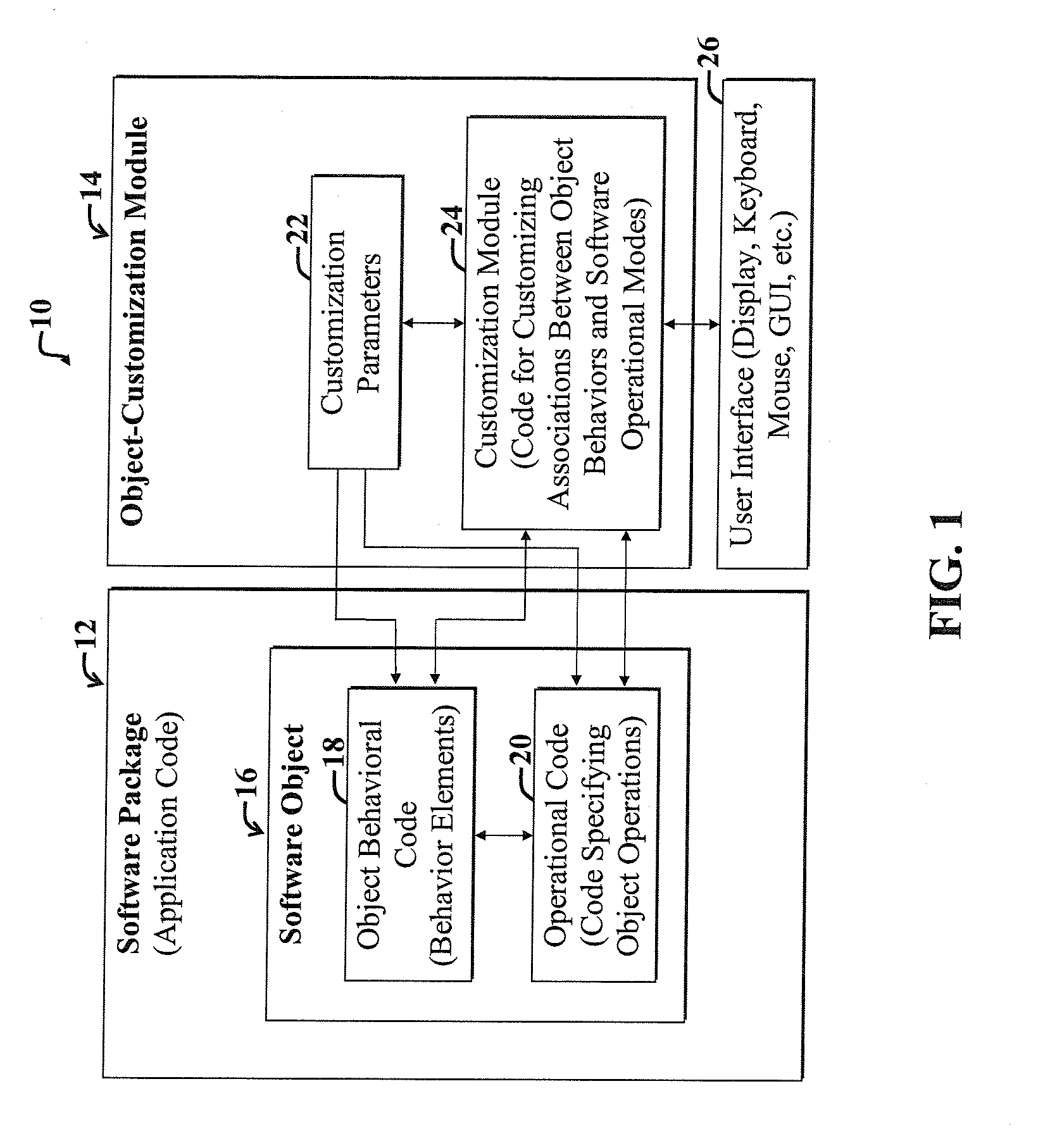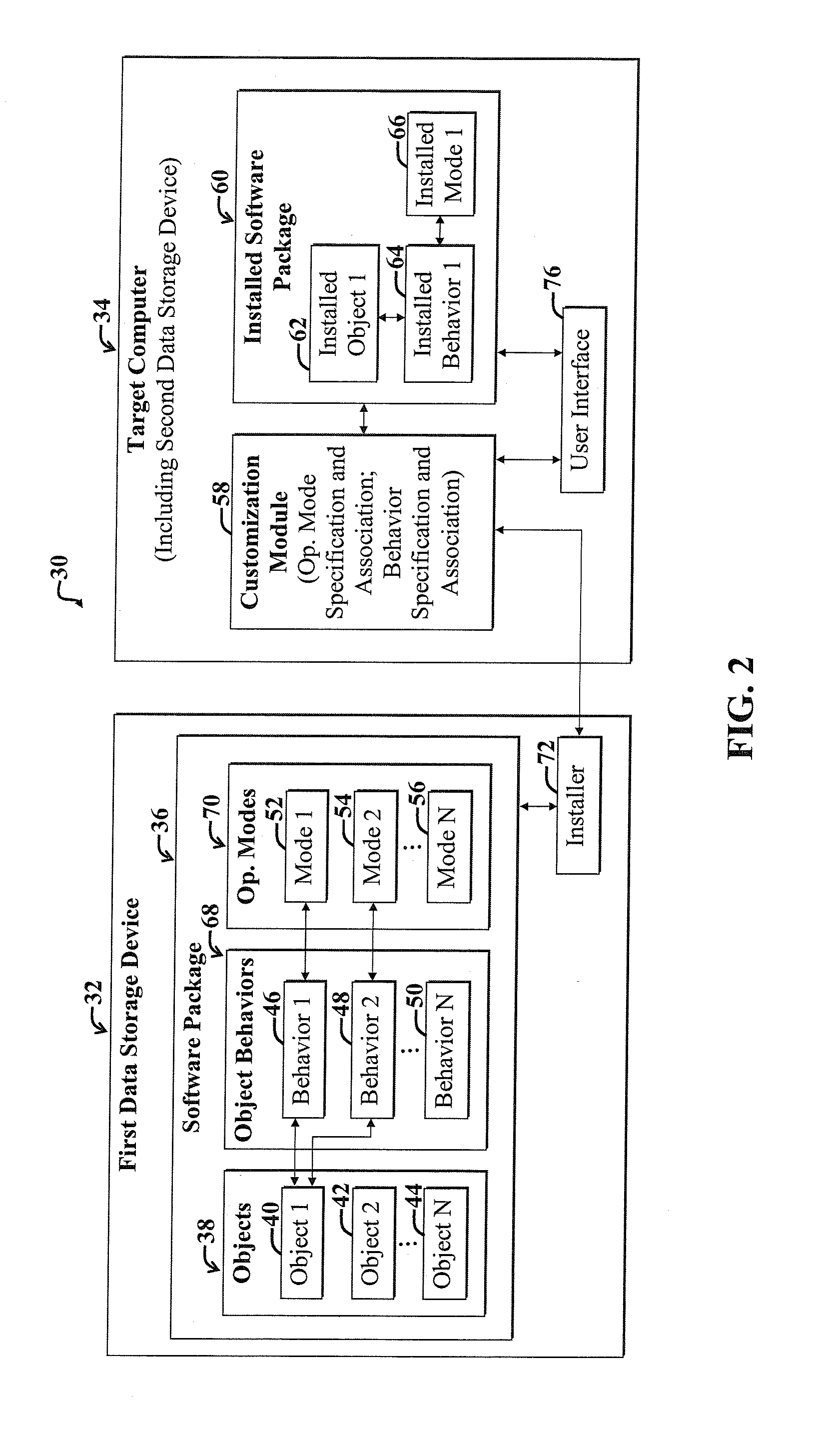Association of object elements to operational modes
a technology of object elements and operational modes, applied in the field of computing applications, can solve the problems of prohibitively time-consuming and costly for practical end user modifications or customizations, lack of functionality of existing systems and methods for facilitating control of software behavior, and inability to facilitate user friendly end user control. improve the overall applicability of the software to the application at hand, and facilitate the disassociation of object behaviors
- Summary
- Abstract
- Description
- Claims
- Application Information
AI Technical Summary
Benefits of technology
Problems solved by technology
Method used
Image
Examples
Embodiment Construction
Although the description has been described with respect to particular embodiments thereof, these particular embodiments are merely illustrative, and not restrictive.
For clarity, certain well-known components, such as computers, hard drives, processors, operating systems, servers, databases, power supplies, and so on, have been omitted from certain figures. However, those skilled in the art with access to the present teachings will know which components to implement and how to implement them to meet the needs of a given application.
FIG. 1 is a diagram illustrating a first example embodiment of a system 10 for associating object elements 18 to software operational modes 20. The system 10 includes a software package 12 in communication with an object-customization module 14. The software package 12 includes code, i.e., computer readable instructions, defining a software object 16. The software object 16 includes object behavioral code 18, which includes behavior elements defining vari...
PUM
 Login to View More
Login to View More Abstract
Description
Claims
Application Information
 Login to View More
Login to View More - R&D
- Intellectual Property
- Life Sciences
- Materials
- Tech Scout
- Unparalleled Data Quality
- Higher Quality Content
- 60% Fewer Hallucinations
Browse by: Latest US Patents, China's latest patents, Technical Efficacy Thesaurus, Application Domain, Technology Topic, Popular Technical Reports.
© 2025 PatSnap. All rights reserved.Legal|Privacy policy|Modern Slavery Act Transparency Statement|Sitemap|About US| Contact US: help@patsnap.com



